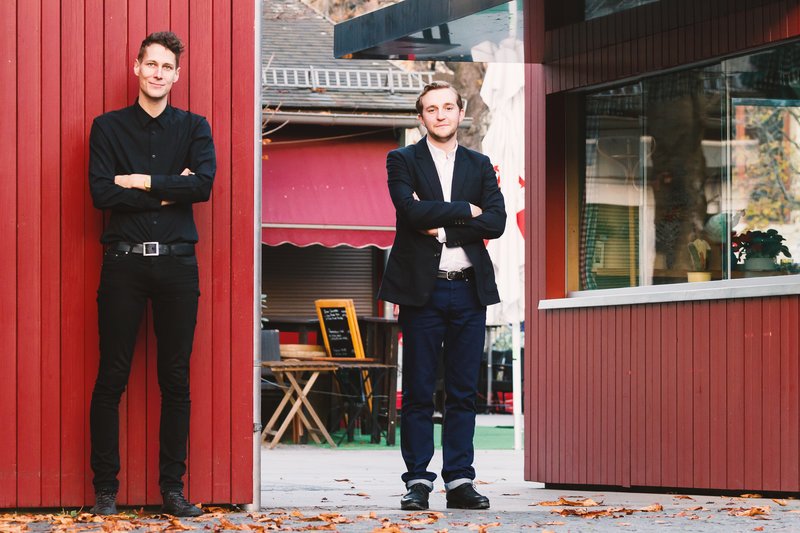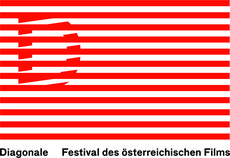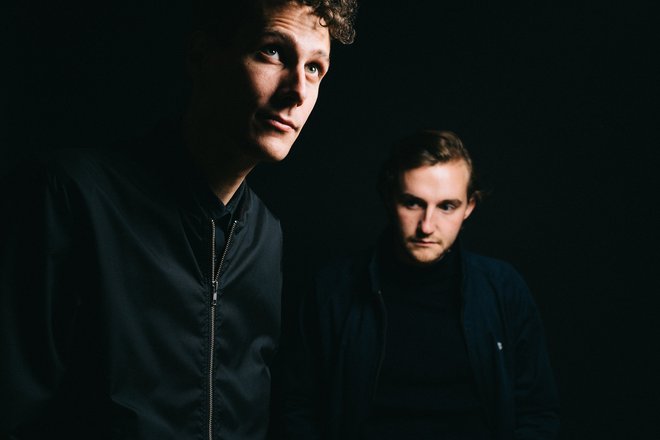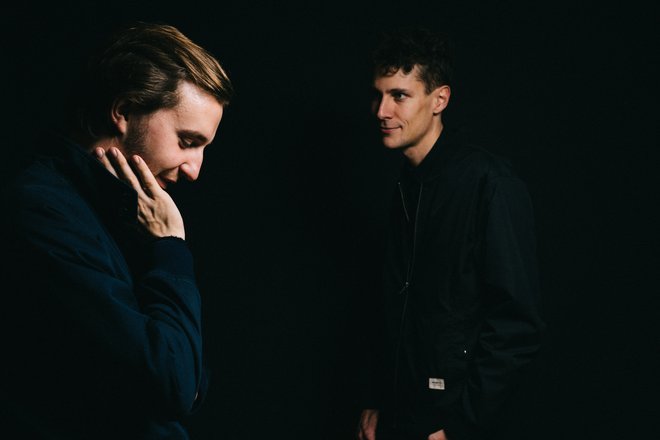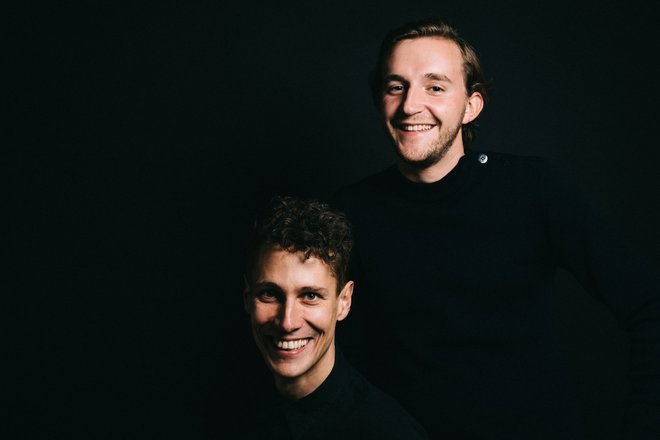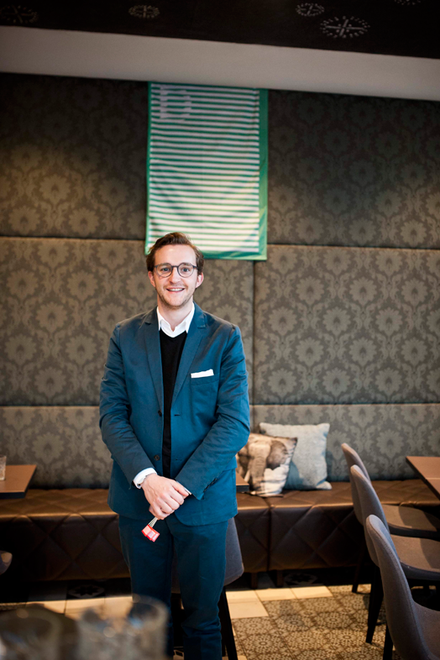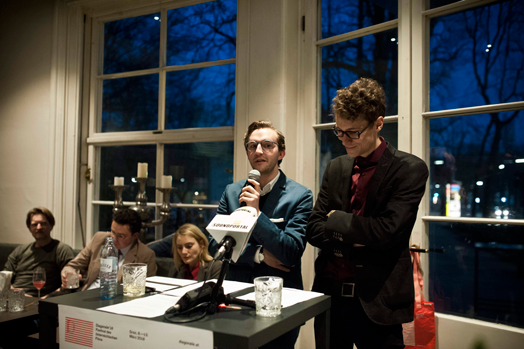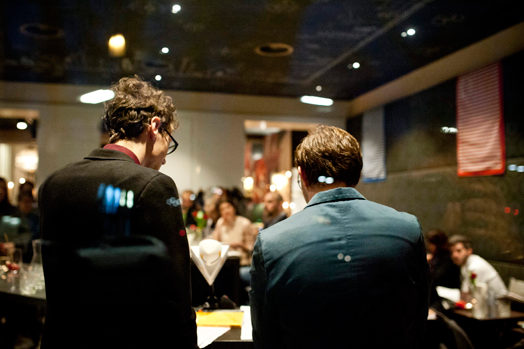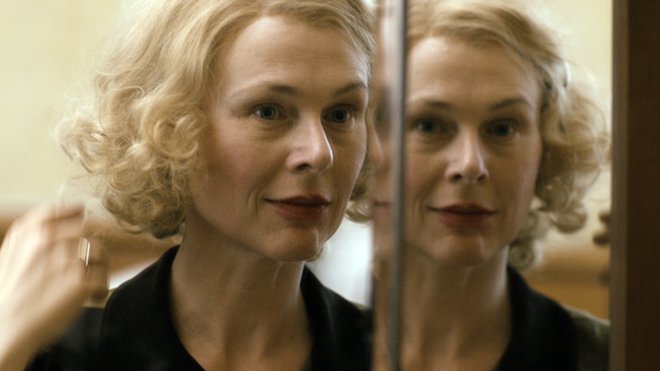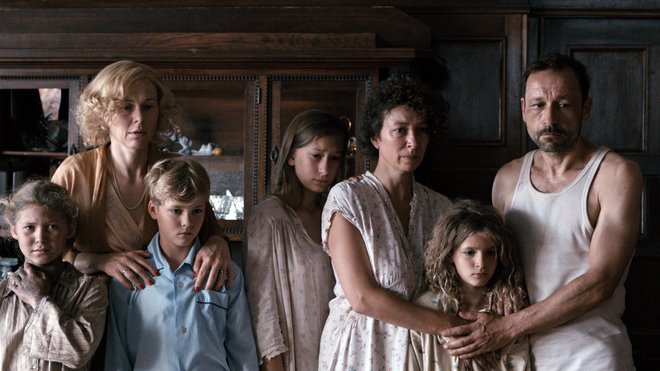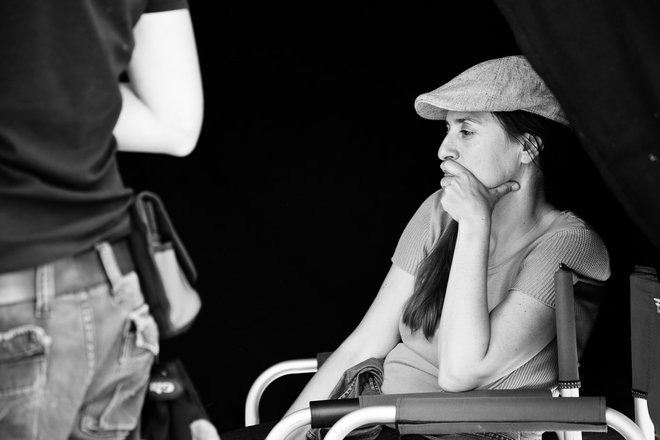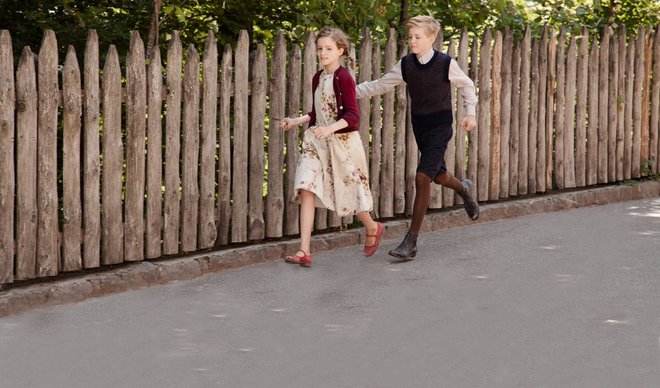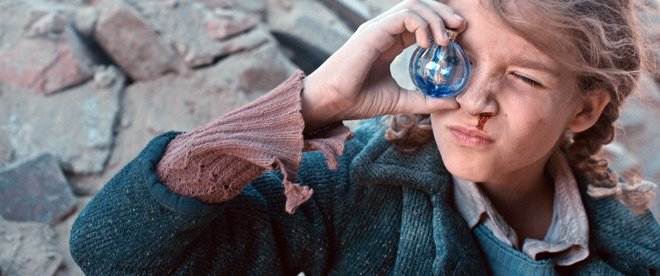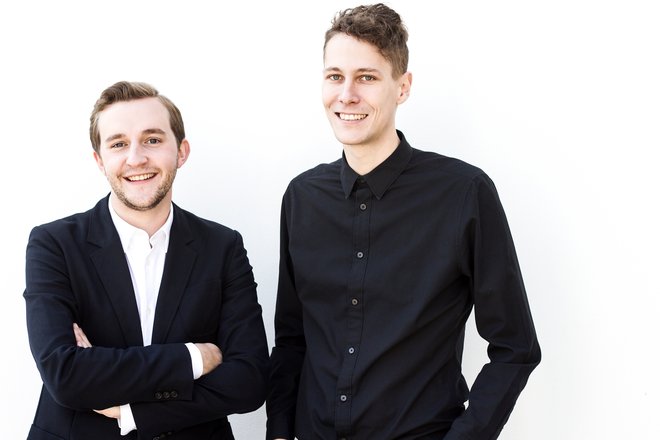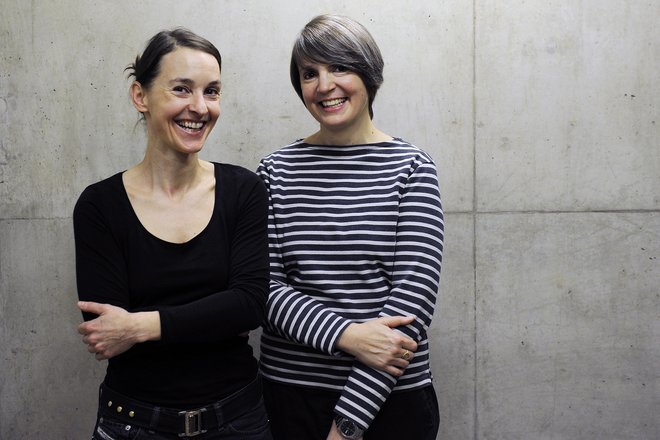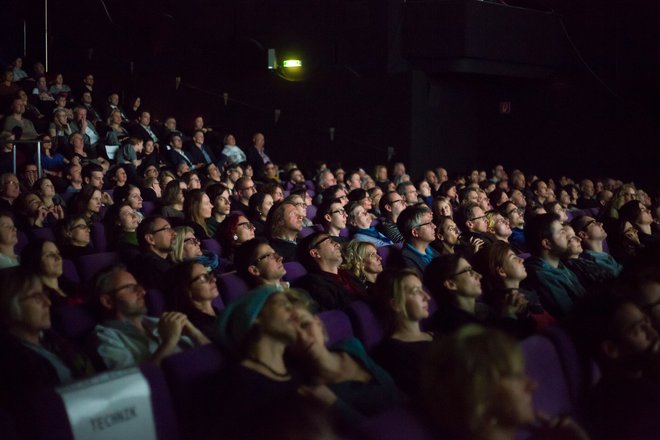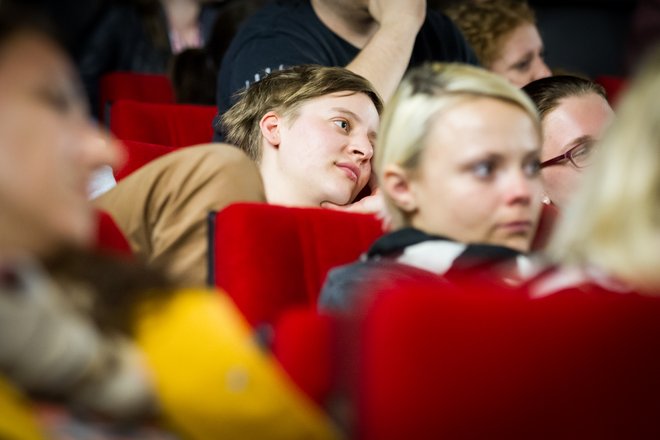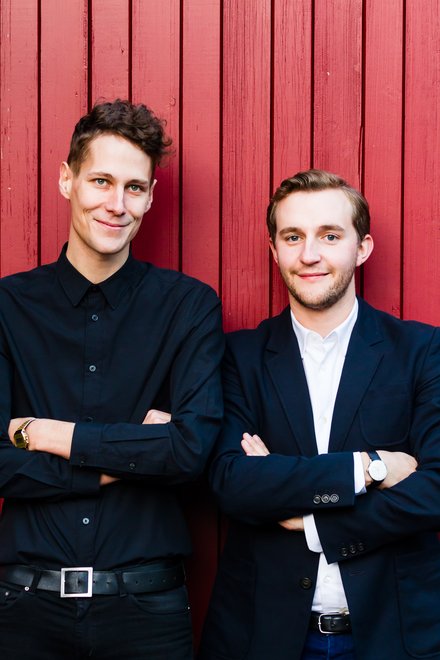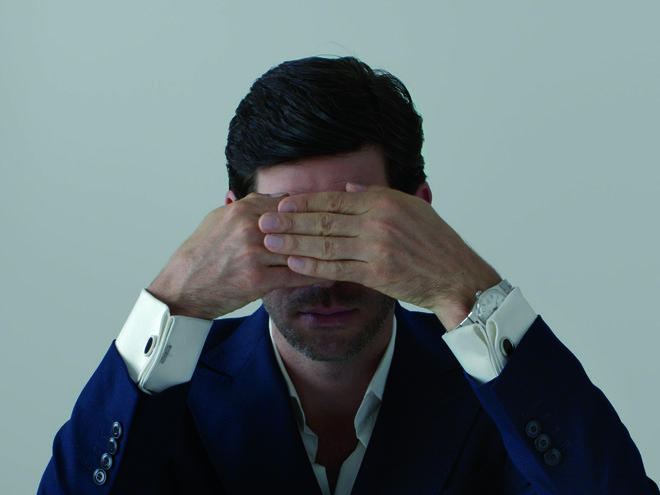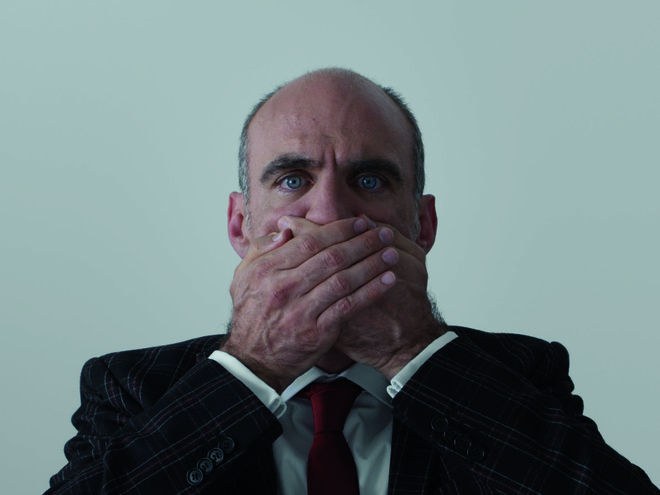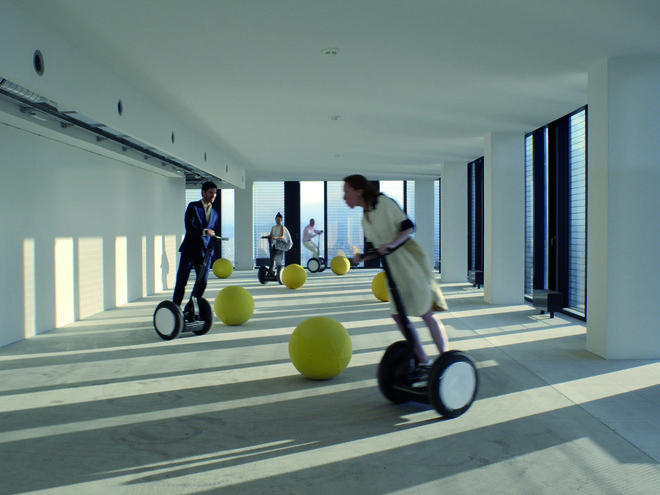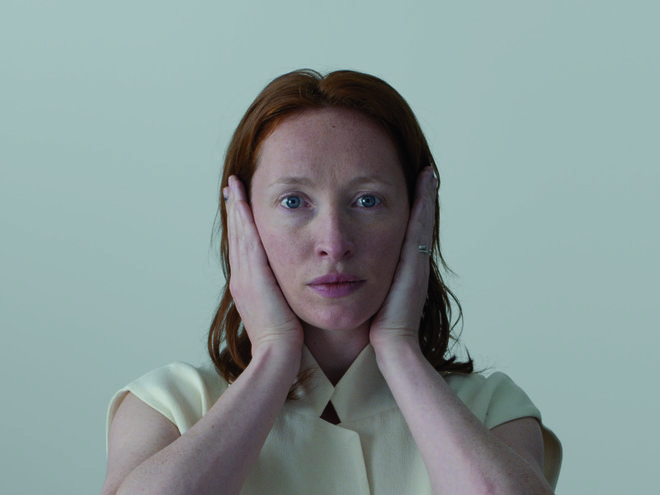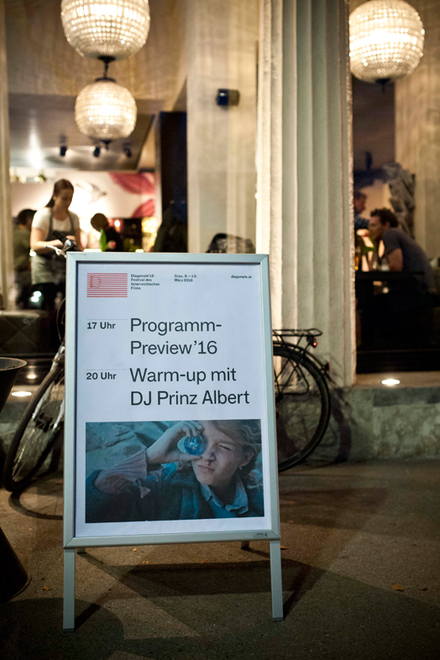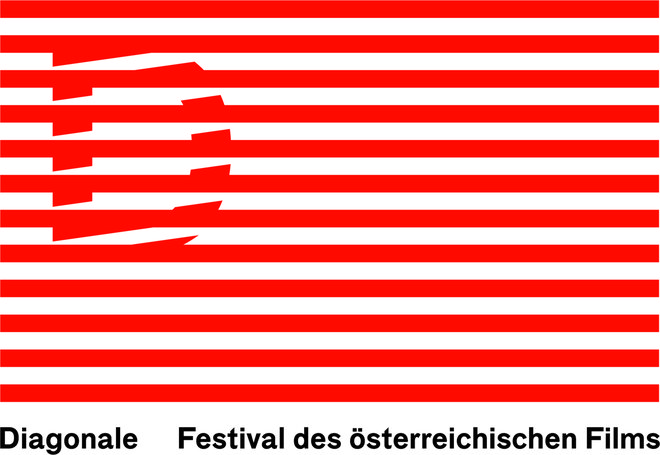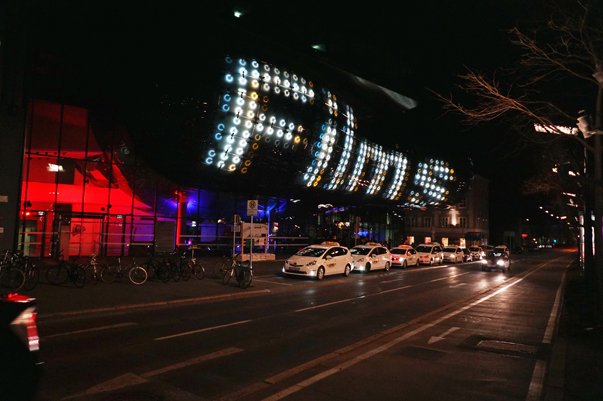Cinema on the verge of pop culture
Sebastian Höglinger and Peter Schernhuber are the new directors of the Diagonale film festival in Graz which takes place each year in March. How well do the two get on together? Watching blockbusters on your cell phone – a do or absolute don’t? What are the hottest new discoveries from Austria, and just how red will the carpet be in Graz? We met the two in a proper theatrical setting: five o’clock tea in front of the fireplace in the saloon of Vienna’s Hotel Bristol.
Antje Mayer-Salvi: Can I pour you guys a tea? You can take a breather from all the festival stress and make some small talk. So do you guys have your own private film rituals? Like you always buy a Fanta, popcorn, or sweet and sour apple rings? Row 15 in the middle…
Peter Schernhuber: I really like it when going to the movies becomes a full-blown experience, not just deciding to quickly catch a film but meeting for dinner beforehand, watch the film, have a drink in a charming foyer afterwards, and the evening continues open-ended somewhere else. That’s something that the two of us don’t have the pleasure to do at the moment, a private visit to the cinema without a specific purpose.
Sebastian Höglinger: Every time I go watch a blockbuster – yes, I actually like to do that! (laughs) – I go there with the plan to buy all kinds of tasty treats at the snackbar. Then I usually find it too expensive, there’s too many people in line, and I end up in front of the screen empty-handed.
Film connoisseurs like you never watch films on a laptop or cell phone, right?
S.H.: True enough, I prefer to watch films in the cinema! I like the austerity of the cinema at the Austrian Film Museum, where original copies are screened with best technical capacities. But I love the Gartenbaukino just as much, one of the nicest theater locations in Austria – even though it’s not incredibly comfortable, it has an unbelievable allure. I’ve also acquired a taste for these multiplex cinemas as well. I like the foyers, they remind me of my first movie-going experiences in my childhood and youth…
“The age of the almighty Diagonale directors is over!”
… though people with depression should try to avoid multiplex foyers…
S.H: But they do work quite well as a meeting point for lots of kids, even when they often don’t go to a movie. These places have a social component that I find somehow interesting.
And you, Peter?
P.S.: It’s really, really exciting to visit these ambitious new cinema buildings, like the cinema in SALT, a cultural institution in Istanbul, or the already mentioned “Invisible Cinema” of the Austrian Film Museum, where the Austrian architect Gabu Heindl redesigned the foyer quite splendidly eight years ago. What does the ideal cinema look like in 2016? That’s an interesting question!
Congratulations on your new jobs, by the way! How was it when you got the notorious call from Hollywood… er, Graz?
P.S.: It was kind of surreal. At the time I was in the Köchert jewelry shop in the 1st district in Vienna, standing in front of the display cases…
… just to have a look again at what jewels are on sale nowadays (laughs)…
P.S.: Yeah, right! (laughs) No, it was during the Passionswege tour of the Vienna Design Week, which I was still working for at the time. I just casually picked up the phone and the Diagonale committee was on the other end…
S.H: … a totally strange moment, this call out of nowhere in the afternoon, extreme happiness and, on the other hand, also great respect for what was coming our way.
Peter, you are 28, Sebastian, 32. You’re both Upper Austrians, both did film and media studies in school, already led the YOUKI International Youth Media Festival together in Wels, and “practiced” with the Diagonale for seven years. That’s a pretty ambitious resume for your young ages. And you obviously get on quite well with one another!
P.S.: We’re not all that young anymore! Alexander Horwath, director of the Film Museum, was already the head of the Viennale at 27. It was a very conscious decision to apply for the position as a team. Naturally, we divide our tasks internally, like reviewing the films and the organization of certain program points, but the final decisions are made together. To put it bluntly, we’re not doing the job as a grassroots hippie collective, but, on the other hand, we do appreciate that the age of the “almighty director” is over! By the way, our predecessor Barbara Pichler also advocated a heterarchical culture.
“Diagonale isn’t about our own curatorial self-fulfillment trip!”
Do you sometimes call each other at midnight to quickly update the other?
S.H.: At that time we needn’t call, we’re still in the office together! (laughs) At the moment there isn’t a person I spend more time with than Peter.
And you split the paycheck? How generous…
P.S.: No, not quite. Thank god. To clear up any delusions: We’re definitely not doing this job for the money!
You’ve revealed one or the other detail about the program in other media. I’d like to know a bit more personal tips! What are your favorite films?
S.H.: I’m personally really interested in the diversity of Austrian cinema. That’s why I applied for the job. Currently there are a lot of hybrids where one is not really sure whether it is a documentary, a feature film, or if it is coming more from an avant-garde corner. It’s a fantastic year in this respect! I really like coming-of-age films, cinema on the verge of pop culture. That also comes from my work with the YOUKI festival. But I am just as open for an experimental film and to embark on more abstract forms of filmmaking. Those who are familiar with our work know that we do not play one format off against another.
Which films have you seen a dozen times?
S.H.: There’s an answer to that question which no one believes anymore and is often interpreted as coquetry on my behalf, namely “Heaven or Hell” by Wolfgang Murnberger. His graduate film at the filmacademy Vienna from the beginning of the 90s. One of the greatest films about coming-of-age and the cinema as a place – and this enduring tag Austria still bears, this post-Nazist fug and Catholicism. But my all-time classic – I don’t know how many times I’ve seen it – is “Dazed and Confused” by Richard Linklater.
Peter, is there a recent film that has changed your viewpoint?
P.S.: Something quite refreshing and which caused a stir was the work by Noah Baumbach with Greta Gerwig, “Frances Ha”. I just love intelligent laughter in the end.
How many hours have you spent in front of the big screen watching films in the past months?
P.S.: Hard to say, maybe 500. This year we had 512 submissions! About 100 films enter into the competition, that’s long and short films, and then there are about 50 more in the retrospectives. It’s highly important to us to be transparent about who views these films with us. We chose three advisers: Claudia Slanar for Innovative Cinema, Alejandro Bachmann for Documentary Films, and Alexandra Zawia for Feature Films.
Did you discover any pearls this year?
S.H.: Oh yeah! But the Diagonale isn’t about our own curatorial self-fulfillment trip. Naturally, our private opinion plays a role, but the festival should be a reflection of contemporary filmmaking in Austria. When it was the “Sebastian Höglinger & Peter Schernhuber Film Show” it would look very different at some points.
“The nice thing about our time is the simultaneity of analog and digital film, VoD and cinema.”
Wonderful! So I’ve got two experts sitting here, who have watched 500 hours of new Austrian film – can you tell me about new trends? Exciting developments?
P.S.: It is incredibly difficult to paint a picture with a broad brush. The diversity in Austria is enormous. Concretely – and this is no secret – one can definitely name a couple central positions in young contemporary film from Austria: for example, the experimental filmmaker Rainer Kohlberger (*1982) or Daniel Hoesl (*1982), who presented his new film “WINWIN” at this year’s International Film Festival Rotterdam.
Today high-quality, artistically challenging, or simply good film in the broadest sense can also be found in the Internet, on YouTube, Vimeo, and Netflix. How do you address this development?
S.H.: We observe it and naturally pay due credit as well. We’ve planned a sort of return of the non-theater format to the theater in cooperation with the TV channel Sky. We show the whodunit TV series “The Last Panthers” in the cinema hall.That’s indeed a major issue for us – where are the exciting positions taking place nowadays? How can we bring them back to the cinema? Does that even make any sense?
P.S.: At the beginning of our time as directors, senior members often brashly asked – quite likely because of our apparent young age (laughs) – if we wanted to shift the festival into the Internet now. The nice thing about our time is the simultaneity of analog and digital film, VoD and cinema. filmkoop Wien, a cooperative of young filmmakers in Vienna, for instance, are dedicated to analog film, the same goes for the filmmaker Viktoria Schmid or Antoinette Zwirchmayr, who work with 35mm film. They don’t see analog as a contradiction to digital rather as a tool that helps them realize precisely what they are trying to achieve. It’s an approach that appeals to us, yet it shouldn’t distract from the fact just how threatened analog film is today.
Isn’t this perhaps a kind of nostalgic hipster attitude? Quentin Tarantino’s “The Hateful Eight” is also shot on 70mm film in the ultra-wide format Ultra Panavision 70. Some gripe that it’s the only interesting thing about the film…
S.H.: Now we can’t really say much on the subject for a change. (laughs) Neither of us has had the time to see “The Hateful Eight”. After the festival! I don’t find that contrived; it is interesting how history is inscribed in the analog material.
P.S.: Sometimes it is indeed a hipster trend. For example, it is no coincidence that Kodak is bringing out a Super 8 camera these days!
Now it is my turn to be nostalgic: The cinema used to be a place where you smoked, ate, kissed, sang, and discussed. In other cities – like Berlin – you can go to the theater at any time of day; even at two o’clock in the morning for a nightcap and come out at sunrise. Fantastic. In Austria films are rarely programmed after 9:00 pm, here and there you might find a matinee that’s not just for kids…
P.S.: This aspect of cinema as a social space, that’s exactly what we would like to fulfill with the Diagonale festival. Also the festival as such is a social space. The film sector and the audience, viewers and producers should meet in the streets of Graz and in the cinemas, have conversations and drinks together. More should be going on than just spectator sport.
S.H.: It wasn’t possible this year, but in the future we will definitely experiment even more with the elements of location and time in the programming.
Film festivals always imply a bit of show and glamour. How glamorous is the Diagonale?
P.S.: We have to admit: We’re fans of glamour, but only when the content makes sense. There is no point in glamour just for the sake of glamour. But Austrian film doesn’t exactly play the glamour card… (laughs)
Is there a red carpet at the opening?
S.H.: There isn’t a red carpet, but a charming Graz variant could be a good idea. In any case, the opening will be celebrated appropriately.
P.S.: Glamour is desired, naturally. On the invitations this year it says: “In case of doubt: overdress.”
En route during the Diagonale with a chauffeur or a bicycle?
P.S.: I’ll walk.
If you had an unlimited budget and a fairy godmother, how would it change the Diagonale?
P.S.: I’d wish for a cinema hall with all the bells and whistles.
S.H: A Diagonale that radiates above and beyond the festival week along with a huge Diagonale party in the center of Graz, during which no one can file a complaint for disturbing the peace, otherwise a complaint will be filed against them!
Thank you for the interview.

